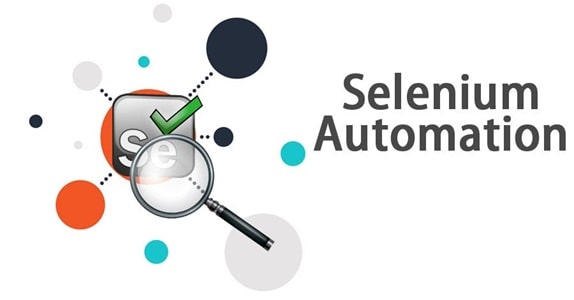In the dynamic realm of application development, innovation, and quality is of utmost importance and testing plays a vital part in ensuring the quality and stability of the applications. Testing can be performed in many ways, but automated testing is a popular approach because it enables quick testing of applications, as well as finding and fixing bugs in the code before they cause problems for the users.
As the world has with the progressive landscape testers get diverse options to choose test automation tools, but Selenium remains a popular testing framework for automating web browser interactions. Amongst the reasons behind Selenium’s popularity is that Selenium testing can be coded in multiple programming languages such as as.Net, Java, C++, Ruby, PHP, Perl, Python, and C#, giving testers the option to utilize a wide range of IDEs with their choice of programming language.
Additionally, Selenium tests can be performed across distinct web browsers and operating systems. The majority of users prefer Selenium because of its features is easy to use interface and simple UIs that facilitate meeting all of the needs of web app testers.
In this guide, we will discuss the expansive scope and potential of Selenium beyond web automation, covering everything needed to know about Selenium Testing, including what it is, how it works, and how you can use it to test applications. Let’s get started.
What is Selenium automation?

Selenium is the most extensively used framework for automating web browsers and delivering quality applications in today’s DevOps and agile processes. It provides a various suite of tools and libraries for web elements interaction, user actions, and verifying the behavior of web applications.
Selenium automation testing has come out as a beacon of efficiency, it is indispensable for anyone involved in web applications. Developers love it because it makes the development process smoother, boosts code reliability, and speeds up feedback, giving them a break from repetitive, time-consuming tasks, and easing stress. Thus enhances the overall efficiency of the testing process.
Selenium testing is beneficial for web interaction testing, regression testing, functional testing, smoke testing, responsive testing, integration testing, as well as UI testing.
Selenium components
Selenium consists of three main components that function to meet the various testing requirements. They are-
Selenium IDE (Integrated Development Environment)
Integrated Development Environment (IDE) is a browser extension for Firefox and Chrome that automates functionality. It helps to speed up the creation of automation scripts.
IDE is a simple-to-use tool that provides various functionalities like prototype testing, recording and playback of user interactions on the browser, and exporting the test cases to any language as a reusable script.
Selenium WebDriver
This is one of the most popular suites of suites, and the first cross-platform testing framework that helps to control and communicate directly with the code and the browser. Testing.
Selenium Grid
The Selenium Grid is the last selenium component. Its primary objective is to minimize the test execution time by executing distributed or parallel test commands across different machines, browsers, and operating systems simultaneously. Grid is highly flexible and can integrated with other suite components for simultaneous execution
Why Selenium test automation?
Because of Selenium’s open-source nature, many testers and developers are leveraging the tool and consider it ideal for web test automation; however, its advantages are way beyond the obvious cost factors, and web testing. In essence, the scope of Selenium automation testing is not confined to mere web testing; it is a strong tool playing a pivotal role in shaping the digital landscape of quality assurance. There are other countless reasons for Selenium’s success.
Its adaptability, efficiency, and compatibility with modern application development practices prove Selenium is a key player in ensuring high-quality application delivery. In the dynamic realm of software development, Selenium automation testing continues to evolve, and its impact on the application testing domain is getting deeper, offering exciting possibilities for the future. Selenium provides several features to unveil its full potential beyond web automation.
Key features of the Selenium framework
Selenium’s key features and benefits make it a go-to choice for developers and testers worldwide. It enables testers to proficiently navigate web automation challenges and contribute effectively to their respective fields. Let’s discuss some key features of Selenium to harness its full potential
Versatility across programming languages
Selenium supports combinations of programming languages, including Java, Python, C#, Ruby, and JavaScript. This versatility empowers developers and testers with the option to utilize a wide range of IDEs with the choice of programming language testers are most comfortable with, fostering a seamless integration of Selenium into a wide range of development environments.
Open Source and cost-effective
One of Selenium’s most exciting features is that it is a free or open-source tool, accessible publicly with no extra charges. Being open source Selenium not only aligns with collaborative development but also eliminates financial barriers, bringing substantial benefits in terms of cost-effectiveness and making it accessible to a broad user.
Versatility for testing types
Selenium has extended its versatility by providing support for various testing types, including functional, regression, performance, and load testing. Hence QA teams leverage Selenium to ensure that web applications perform as intended after new changes or updates get added and that they perform seamlessly under various load conditions.
Shift-left testing practices
Shift-left testing is a strategic approach where testing takes place earlier in the development cycle. Selenium supports shift-left testing practices. Detecting and resolving defects earlier, Selenium helps in contributing to the overall efficiency of the development life cycle. Thus reducing the cost and effort associated with fixing issues in later stages.
Integration with various testing frameworks
Selenium seamlessly integrates with popular testing frameworks like JUnit, NUnit, TestNG, and more. This integration facilitates the creation of structured and maintainable test scripts for selenium automated testing, helping in enhanced and organized test execution within the development workflow.
Parallel test execution
The parallel testing feature of Selenium assists in saving time and effort for the testing teams by enabling them to run multiple tests simultaneously. This feature results in less implementation time and optimized resource utilization, especially in scenarios where efficiency is paramount.
Active community and continuous updates
Selenium is supported by a large and active community, which contributes to extensive documentation, tutorials, and forums. With this large user base, the Selenium community system thrives to support users with upgrades, constant improvements, knowledge sharing, and frequent releases. This community-driven support also helps users stay updated on the latest developments in Selenium.
Beyond web automation; unveiling Selenium’s potential
Selenium is a popular framework automating web browsers. However, with the ever-evolving waves of the digital landscape, Selenium has extended its potential and emerged as a powerhouse for streamlining the testing process.
Let’s embrace Selenium’s innovative capabilities for effective and impactful Selenium automation testing, demonstrating how its versatility can be leveraged for other tasks beyond web testing.
Web scraping
Selenium, beyond its conventional role in web testing, has emerged as a dynamic and powerful tool in web scraping. It can be leveraged for web scraping because it offers efficient web scraping capabilities for efficient data extraction and gathering data from websites.
Web scraping involves the automated gathering of data from websites. Selenium can handle this task because of its ability to mimic human interaction with web elements. By interacting with dynamic web content it enables the extraction of dynamically loaded data.
Initially designed for web testing, Selenium has evolved as an essential player in web scraping due to its capability to handle complex scenarios where traditional scraping methods fall short.
Automating daily online activities or tasks
Selenium can automate many of the repetitive online activities. Testers can use it to automate tasks like form filling, scrolling down, clicking buttons, submitting, or even automatically posting on social media and many more interactive actions that traditional libraries struggle with.
Its rich set of methods for automating these web elements allows testers to simulate user interactions and validate application functionality.
Performance monitoring
While Selenium is not a performance testing tool, it can be used to assess how the website performs in different browsers with its integration with performance testing tools, like JMeter.
By creating a suite of Selenium tests, testers can simulate user interactions and measure the time it takes to complete these actions. This approach enables them to identify performance bottlenecks and enhance their website’s overall performance, leading to an improved user experience.
Appium integration for mobile application automation
Through frameworks like Appium Selenium extends its capabilities beyond web applications to automating mobile applications. This holistic approach enables developers with end-to-end testing of both web and mobile applications, creating a unified testing solution.
Generating website screenshots or videos for enhanced visual testing
Selenium can take screenshots while executing tests. This feature can be employed in several ways. Screenshots of the web pages can be generated across different browsers and devices to review the visual aspects of the web application. This can help spot visual bugs and inconsistencies in layout.
Additionally, Selenium can be used along with other tools for recording videos of user interactions with the web application, aiding in understanding user behavior.
Integration with continuous integration tools
DevOps and Agile practices have highlighted continuous integration and continuous deployment, remodeling the application development landscape. Selenium’s seamless integration with popular CI/CD tools like Jenkins and Travis CI makes it an integral part of the development process.
Incorporating Selenium automated testing into the continuous integration and delivery pipelines helps align with modern development practices, for stable and high-quality web applications with each code change and faster and more reliable releases.
Cross-browser compatibility testing
Selenium’s strength lies in its ability to seamlessly work across different web browsers. Whether it is Chrome, Firefox, Safari, Edge, or Internet Explorer Selenium provides support for all. Testers can use a multitude of browsers to verify web applications are rigorously tested and work as expected across various browsers, which is a crucial aspect in today’s diverse online landscape.
This cross-browser compatibility of Selenium contributes significantly to the creation of robust applications and ensures a seamless user experience for all users regardless of their preferred browser.
Leveraging LambdaTest advanced Selenium capabilities for seamless testing
To unlock the full potential of Selenium and to ensure exceptional user experiences across diverse browsers, platforms, and network conditions it is vital to utilize a cloud-based test automation platform like LambdaTest that seamlessly integrates with Selenium to provide enhanced Selenium automation. Harnessing the power of Selenium with LambdaTest helps teams accelerate testing efforts, identify issues early, and ultimately provide enhanced Selenium automation.
Using LambdaTest is an AI-powered test orchestration and execution platform testers can run manual and automated Selenium tests by getting access to a cloud Selenium grid of more than 3000 environments, real mobile devices, and browsers. This helps in ensuring comprehensive Selenium testing across different devices and accurate automation of user interactions. The platform allows performing both real-time and automation testing of web and mobile applications at scale to ensure their stability and quality with each code change.
This AI-driven platform has built debugging and monitoring tools to capture detailed performance metrics, network logs, and screenshots during test execution, helping to identify bottlenecks, debugging issues, and gaining insights into web application behavior. Additionally, its detailed test reports and analytics capabilities offer actionable insights into test results, performance metrics, and user experience.
Integrating Selenium with LambdaTest helps in automating tests, enhancing test efficiency, improving the overall quality, and delivering reliable and user-friendly applications. Other than Selenium LambdaTest seamlessly integrates with various popular testing frameworks like Appium, JUnit, TestNG, and more, allowing testers to utilize existing automation scripts and frameworks alongside LambdaTest capabilities.
Conclusion
In conclusion, testing applications rigorously is a crucial aspect in today’s diverse digital landscape; Selenium has become a vital tool for assessing web applications. It enables developers and testers to evaluate the user experience and make sure the application is clear and easy to use. Selenium implements a browser-specific driver that accepts and transmits commands to the browser to mimic user interactions and behavior.
Anantha Nageswaran is the chief editor and writer at TheBusinessBlaze.com. He specialises in business, finance, insurance, loan investment topics. With a strong background in business-finance and a passion for demystifying complex concepts, Anantha brings a unique perspective to his writing.


